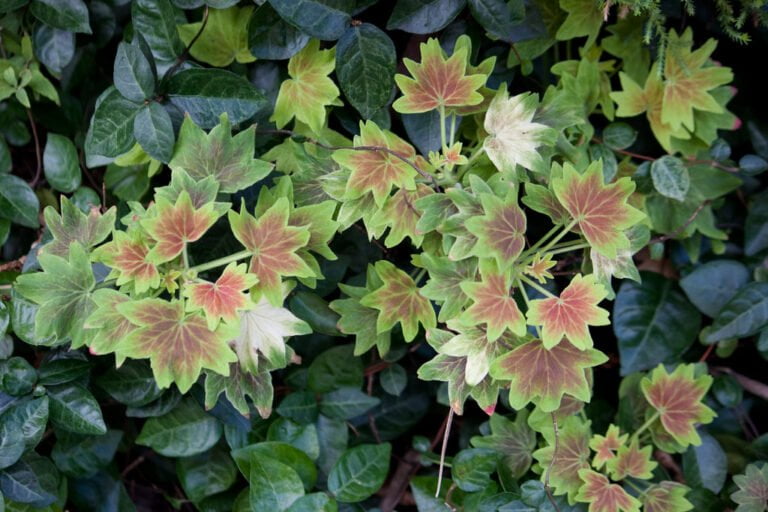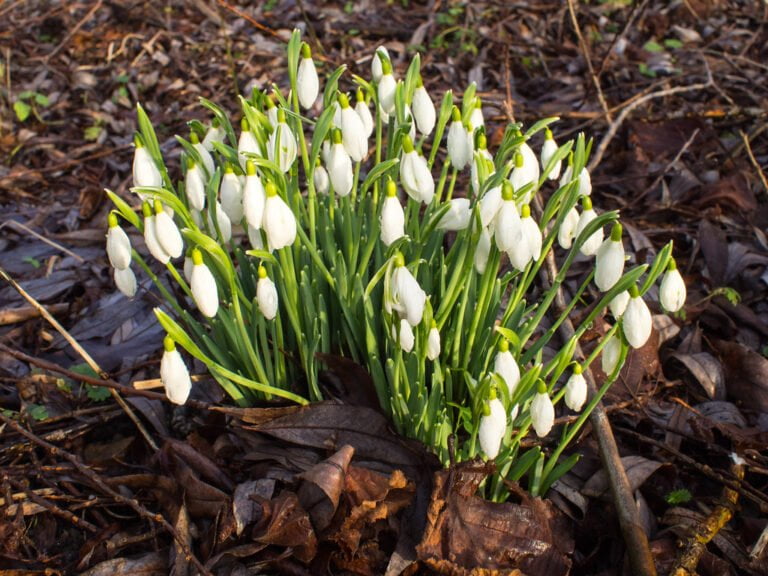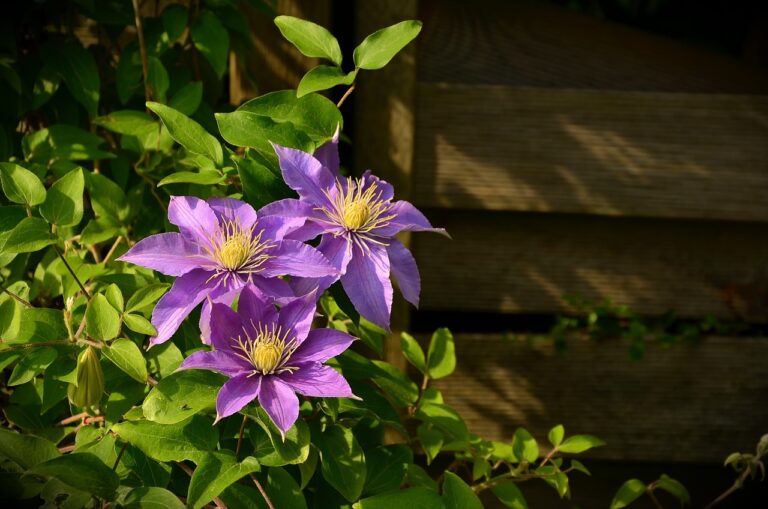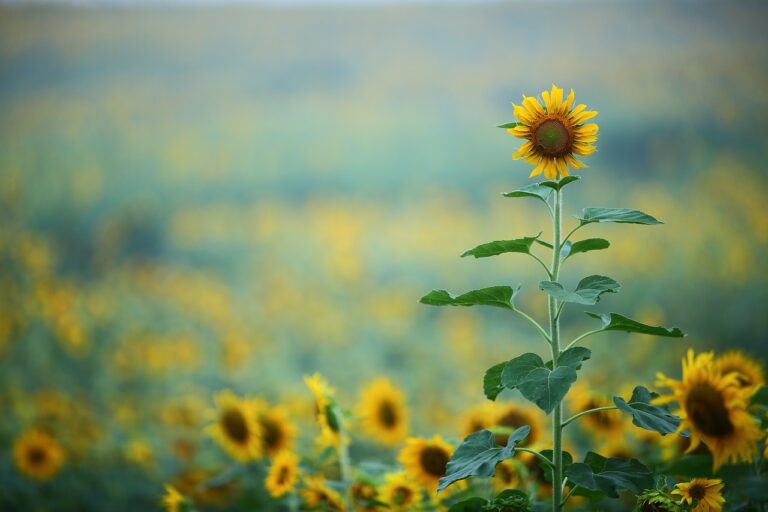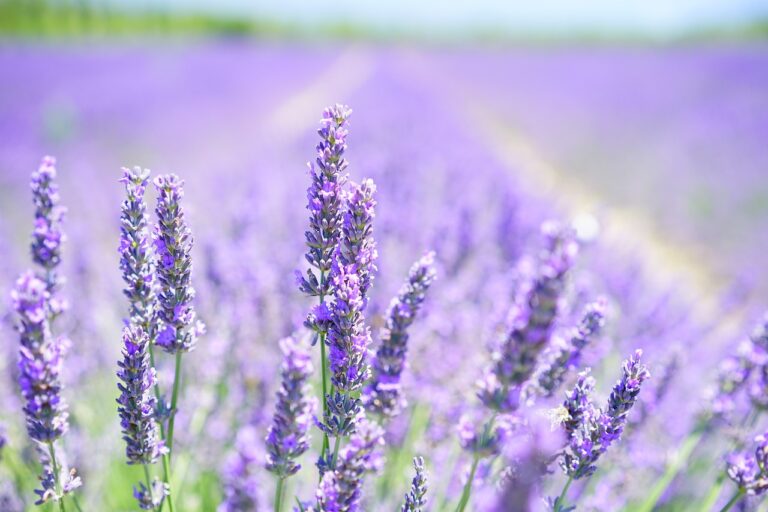Exploring the Best Climbing Flowers for Shaded Areas
When exploring the best climbing flowers for shaded areas, I recommend Climbing Hydrangea, Honeysuckle Graham Thomas, Star Jasmine, Climbing Roses, and vibrant Clematis. These varieties offer unique beauty and adapt well to shady garden spaces. Opt for tubular flowers attractive to pollinators, woody vines for strength, and evergreen foliage for year-round interest. These vines, like Star Jasmine with fragrant white blooms and Japanese honeysuckle with bright yellow flowers, can transform dull, shaded areas into vibrant spaces. Each of these climbing flowers brings its charm and color to your shaded garden, creating a beautiful oasis for you to enjoy.
Top Climbing Flowers for Shade
When selecting climbing flowers for shaded areas, it is essential to choose varieties that thrive in low light conditions while still providing vibrant blooms and foliage. Among the top choices for shade-loving climbers are the Climbing Hydrangea, Honeysuckle Graham Thomas, Star Jasmine, Climbing Roses, and Clematis.
Starting with the Climbing Hydrangea, this stunning vine is perfect for full shade locations. Its white flowers bring a luminous touch to shady areas, and it thrives even in the darkest corners of your garden. The Honeysuckle Graham Thomas, on the other hand, is a fantastic option for partially shady spots. This variety offers multiple flowering times throughout the season and does exceptionally well in moist, well-drained soil.
If you are looking for an evergreen climber for year-round interest, the Star Jasmine is an excellent choice. It rapidly covers walls, fences, and trellises with its glossy foliage and sweetly scented white flowers. Climbing Roses, while preferring light to moderate shade, can still add a touch of elegance to arches and the front of your house. Finally, Clematis provides a wide array of colors and shapes, making it versatile for containers and various structures in shaded areas.
Shade-Loving Climbing Plants
Among the shadow-loving climbing plants, Clematis Blue Angel stands out with its enormous frilly single lilac flowers that grace the garden from June to October. This stunning vine is a perfect choice for adding a touch of sophistication to a shady spot in the garden. When considering the top climbing plants for shade, it’s crucial to select varieties that not only tolerate low light conditions but also thrive in them.
- Sweetest Winter Honeysuckle (Lonicera fragrantissima): This plant displays creamy white tube-shaped flowers from December to March, bringing fragrance and beauty to the shaded areas.
- Clematis Nelly Moser: Thriving in full sun to partial shade, this clematis is an excellent option for training up trellises, obelisks, or arbors, adding a burst of color and interest to the shaded garden corners.
- Clematis Warsaw Nike: Featuring extra-large velvety royal-purple flowers that bloom from May to October, this clematis is a showstopper in shady spots, providing a burst of rich color.
- Clematis Piilu: With its exquisite frilled candy stripe blooms flowering from June to September, this clematis adds a playful and charming touch to shaded areas.
When searching for shade-loving vines that not only survive but thrive in darker corners of the garden, these climbing plants offer a perfect solution, bringing beauty and energy to even the shadiest spots.
Best Vines for Shaded Areas
In shaded areas, selecting vines that flourish in low light conditions is crucial for bringing vibrant colors and life to your garden. When searching for the top vines for shaded areas, consider options like the Honeysuckle. This blooming vine, especially the Japanese honeysuckle variety, can add a beautiful touch to your shady garden with its aromatic and colorful blooms. Another exceptional choice is Star Jasmine, a versatile vine that thrives in shaded locations, offering delicate white flowers with a pleasant scent.
For a more varied range of colors and shapes, exploring different varieties of Clematis is a fantastic idea. Clematis Blue Angel, with its large lilac flowers, and Clematis Warsaw Nike, showcasing royal-purple blooms, are excellent options for adding a burst of color to your shaded garden. If you prefer a vine that blooms during winter, the Sweetest Winter Honeysuckle is a fantastic choice with its creamy white flowers from December to March.
Lastly, consider incorporating ivy varieties into your shaded garden for a timeless and sophisticated look. Ivy is a resilient vine that can prosper in low light conditions, making it a dependable choice for shaded areas. By selecting these top blooming vines for shade, you can create a lush and colorful sanctuary even in the darkest corners of your garden.
Climbing Flowers in the Shade
To cultivate a thriving garden in shaded areas, incorporating climbing flowers that excel in low light conditions is crucial for adding vibrancy and beauty to your outdoor space. When selecting climbing flowers for shaded areas, it’s vital to take into account their specific needs and characteristics to guarantee they flourish in their environment. Here are some important factors to bear in mind:
- Shade Tolerance: Opt for climbing flowers that are particularly suited for shaded areas to make certain they receive adequate sunlight for healthy growth.
- Tubular Flowers: Look for varieties that produce tubular flowers, as they are often appealing to pollinators like hummingbirds and bees.
- Woody Vines: Choose climbing flowers with woody vines for added strength and structure, making them ideal for climbing up walls, fences, or trellises.
- Evergreen Foliage: Consider climbing flowers with evergreen foliage to sustain interest and greenery in your garden throughout the year.
Shade-Adapted Flowering Vines
Shade-adapted flowering vines, known for their resilience in low light conditions, bring a touch of elegance and color to shaded garden spaces. When searching for the perfect vine to brighten up a shady area, consider the Star Jasmine (Trachelospermum jasminoides). This twining vine not only handles shade well but also boasts fragrant white flowers that bloom from late spring to early summer.
Another excellent choice for shaded spots is the Lonicera japonica, commonly known as Japanese honeysuckle. This vine showcases deeply lobed leaves and bright yellow, tubular flowers that are perfect for attracting pollinators. It grows well in shaded areas and can add a splash of color to any garden setting.
For a more unique option, the Hydrangea petiolaris, also called Climbing Hydrangea, is a good choice for shaded walls or fences. This vine features white lace-cap flowers in the summer and attractive foliage that turns a beautiful yellow in the fall. Its ability to thrive in shade makes it a versatile and stunning addition to any garden.
Incorporating shade-adapted flowering vines like Star Jasmine, Lonicera japonica, and Hydrangea petiolaris can transform dull, shaded areas into vibrant and colorful spaces, enhancing the beauty of your garden.

